Strategic Human Resource Management: Best Fit and Best Practice Report
VerifiedAdded on 2022/10/02
|5
|813
|145
Report
AI Summary
This report delves into the realm of Strategic Human Resource Management (SHRM), exploring the nuances of global HR strategies, including the interplay between standardized and localized approaches within transnational strategies. It contrasts the global HR strategy, which emphasizes standardized outputs, with the transnational strategy that blends global standards with local regulations, offering greater flexibility in attracting, developing, and maintaining human resources. The report also examines growth strategies, encompassing internal growth, conglomerate diversification, mergers, and strategic alliances, as well as retrenchment strategies such as turnaround, disinvestment, and liquidation. Furthermore, it addresses the challenges in aligning HRM policies with business strategies, highlighting issues such as differences in employee skills, attitudes, and satisfaction levels, the need for effective change management, the traditional and operational focus of HR roles, and conflicts arising from differing perceptions of HR's role within the organization. The report concludes by emphasizing the importance of understanding and addressing these challenges to enhance organizational effectiveness.
1 out of 5
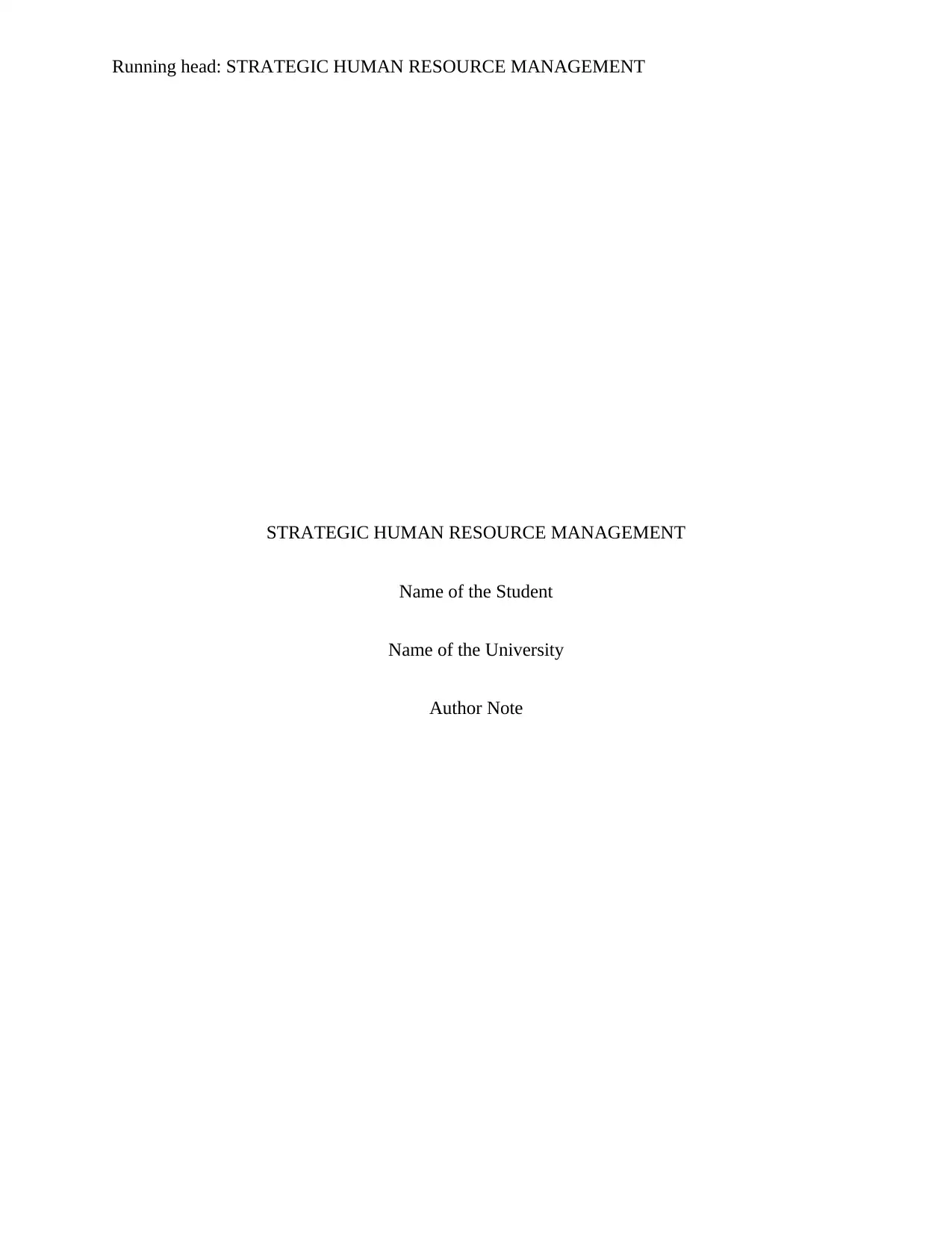
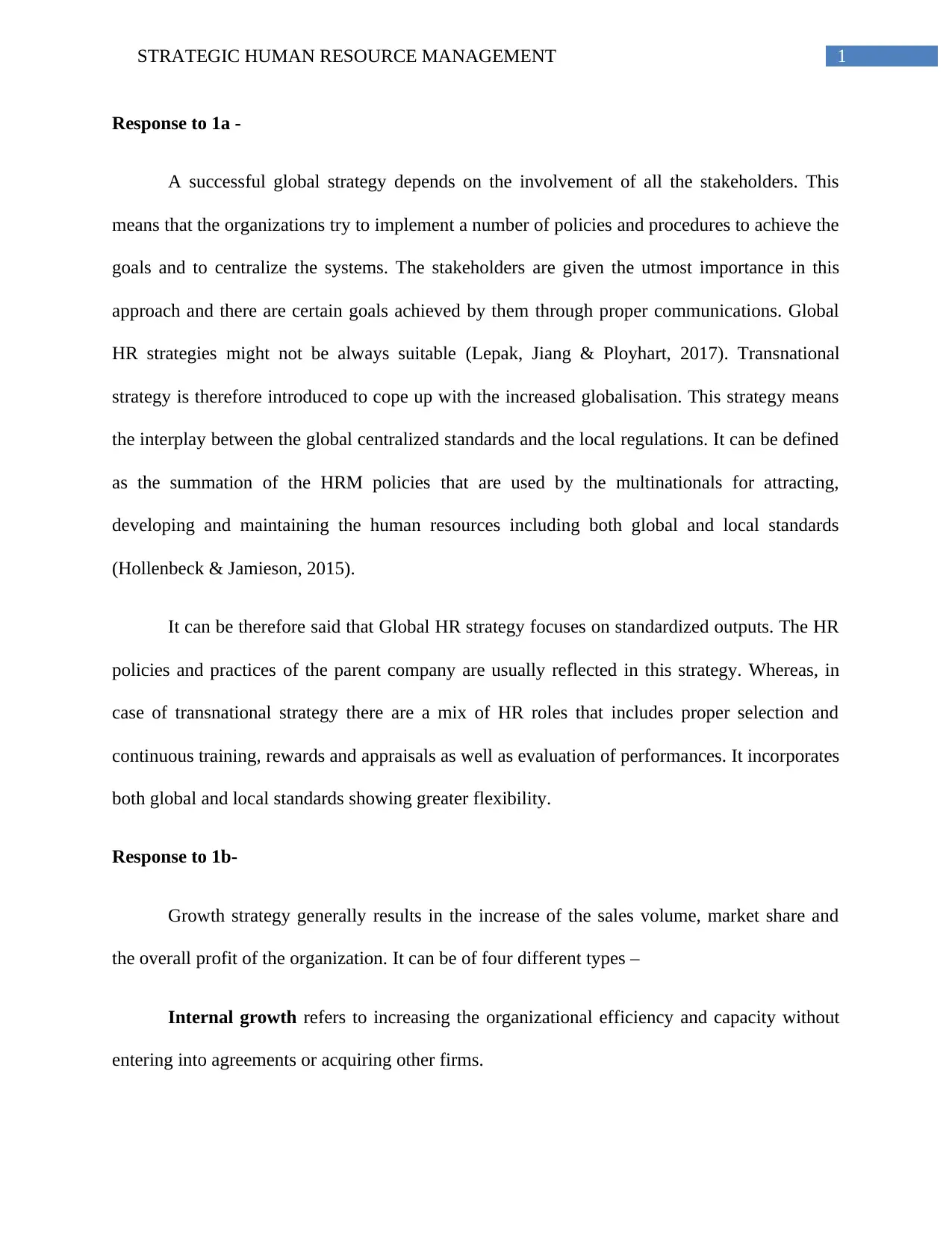
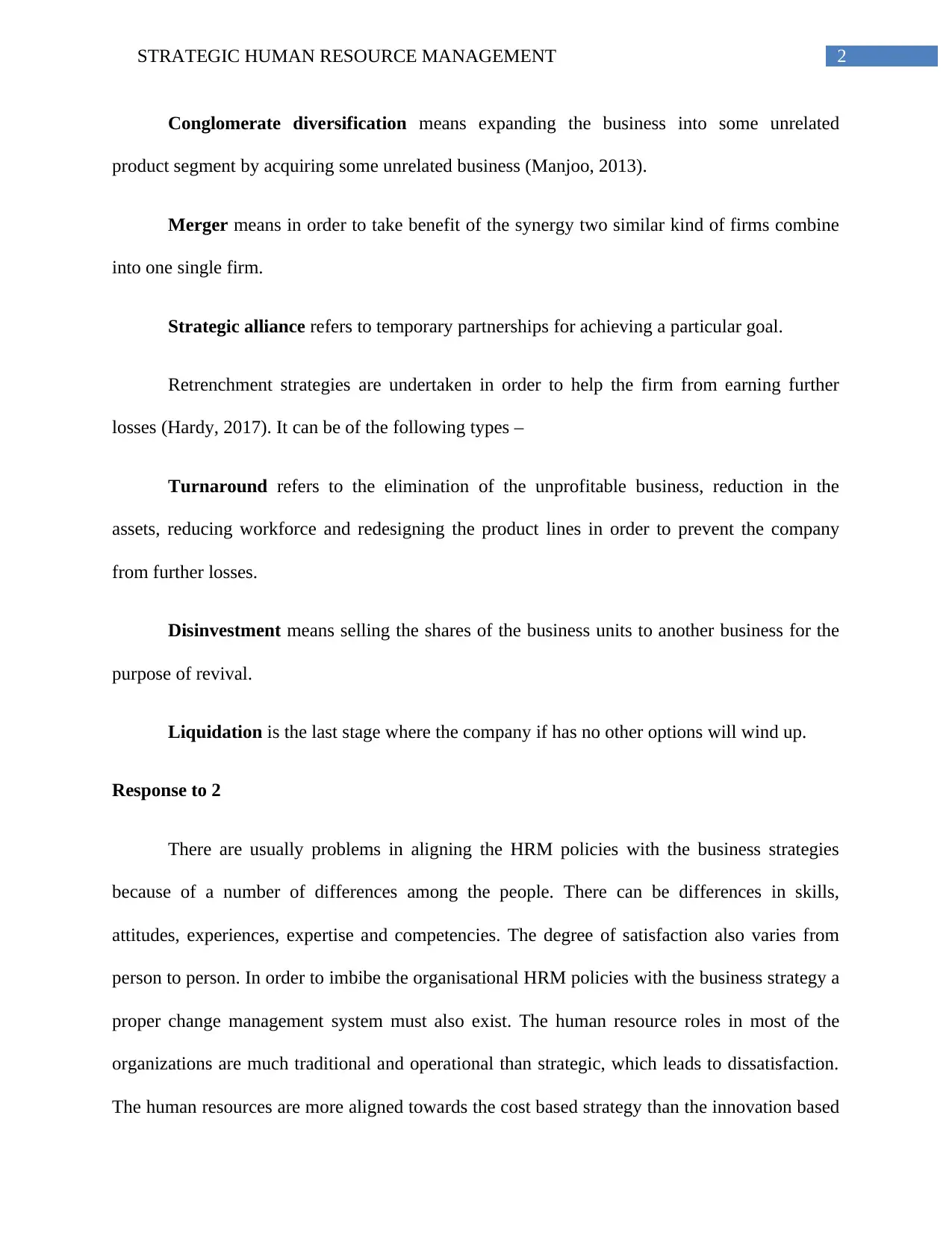

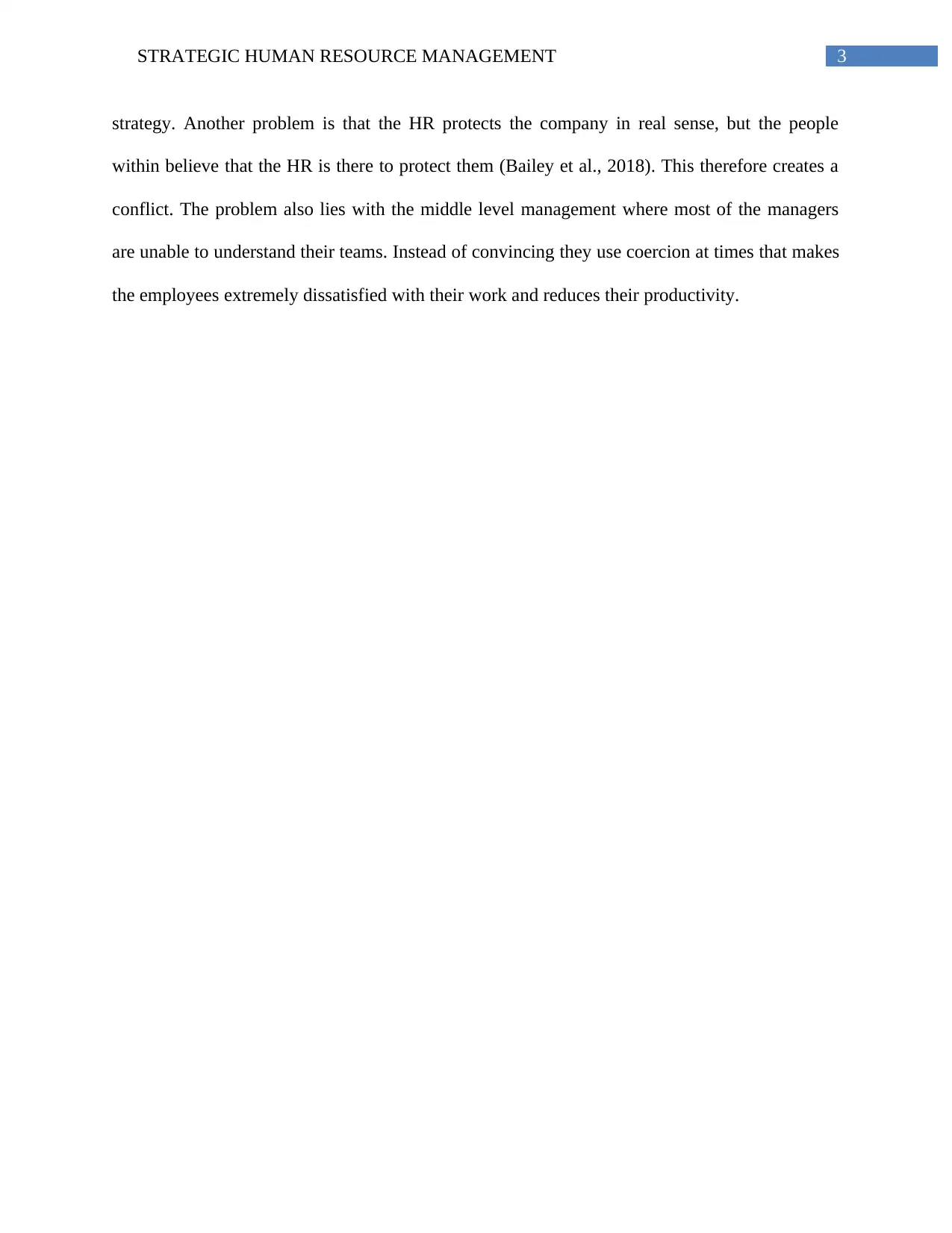
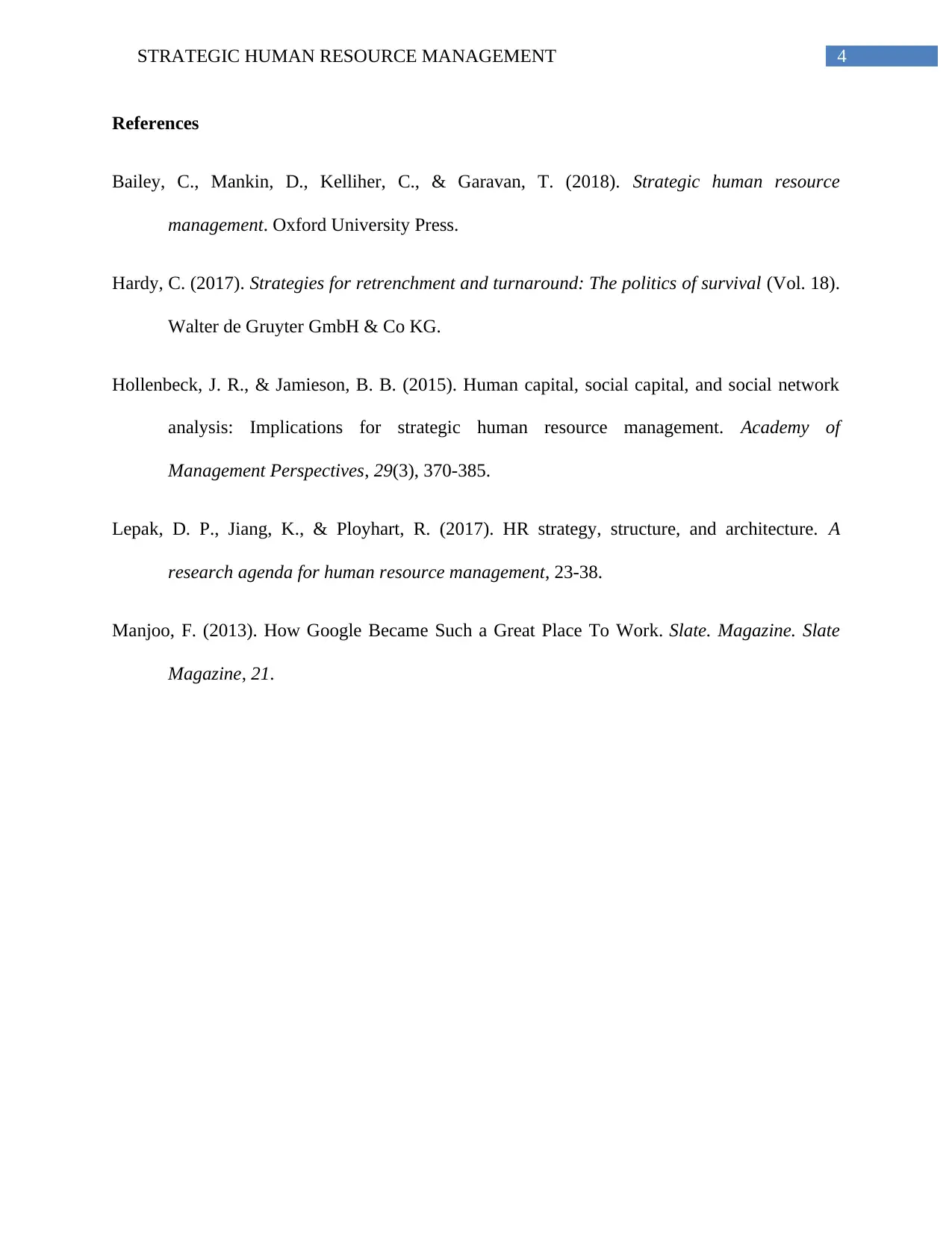





![[object Object]](/_next/static/media/star-bottom.7253800d.svg)